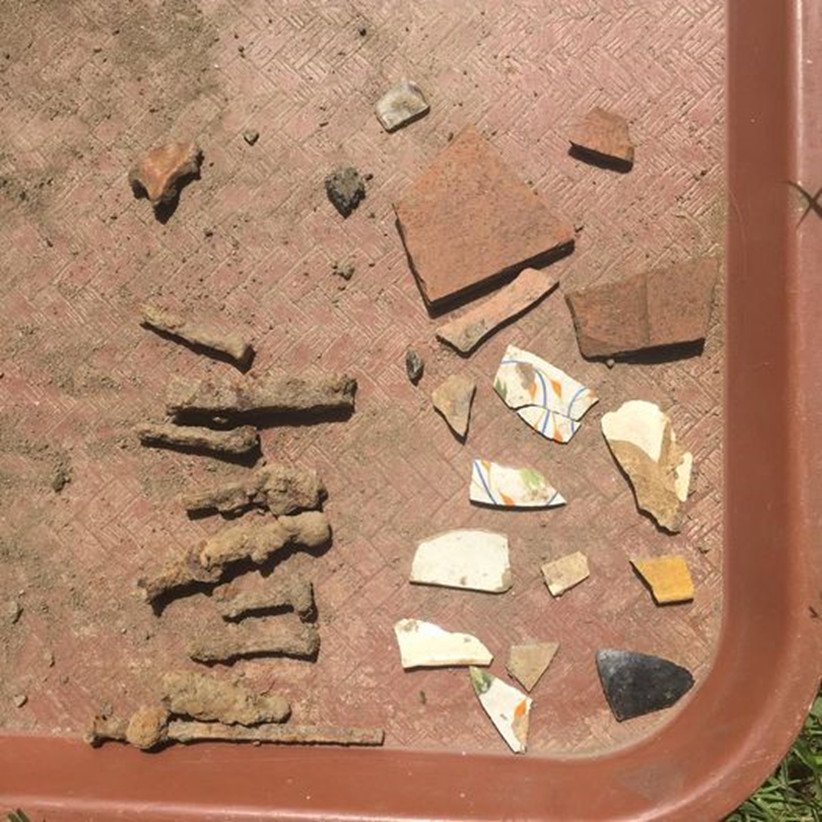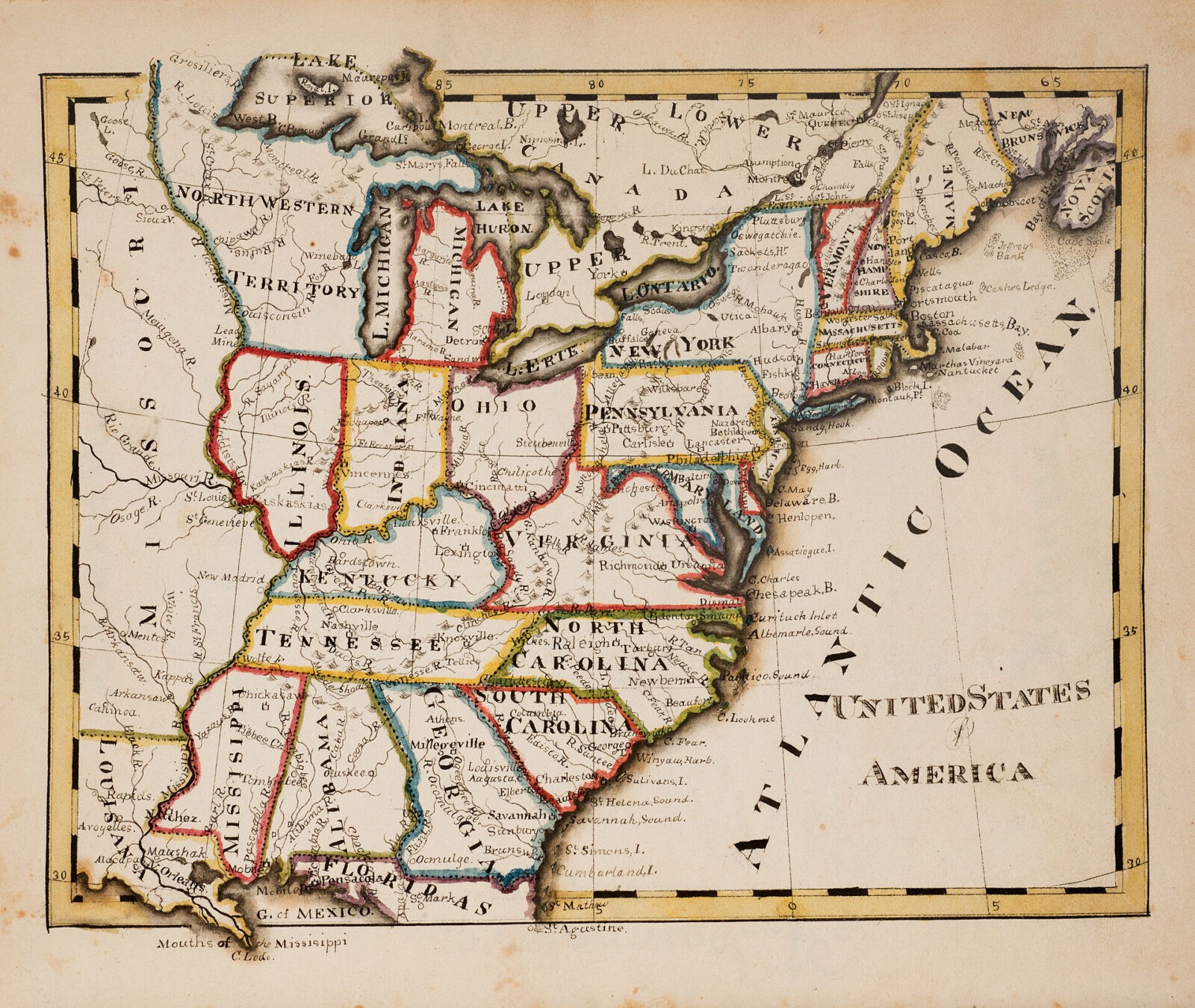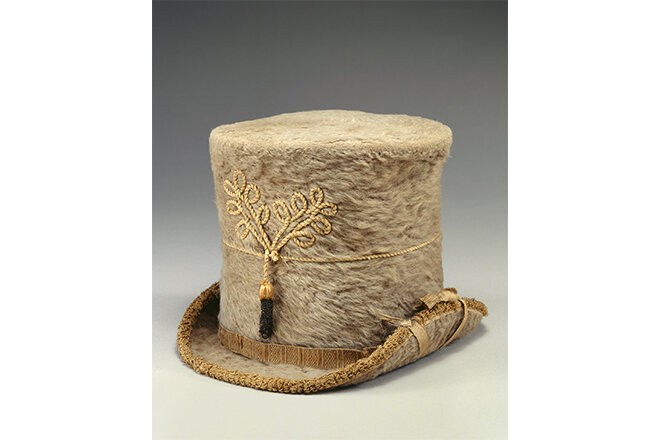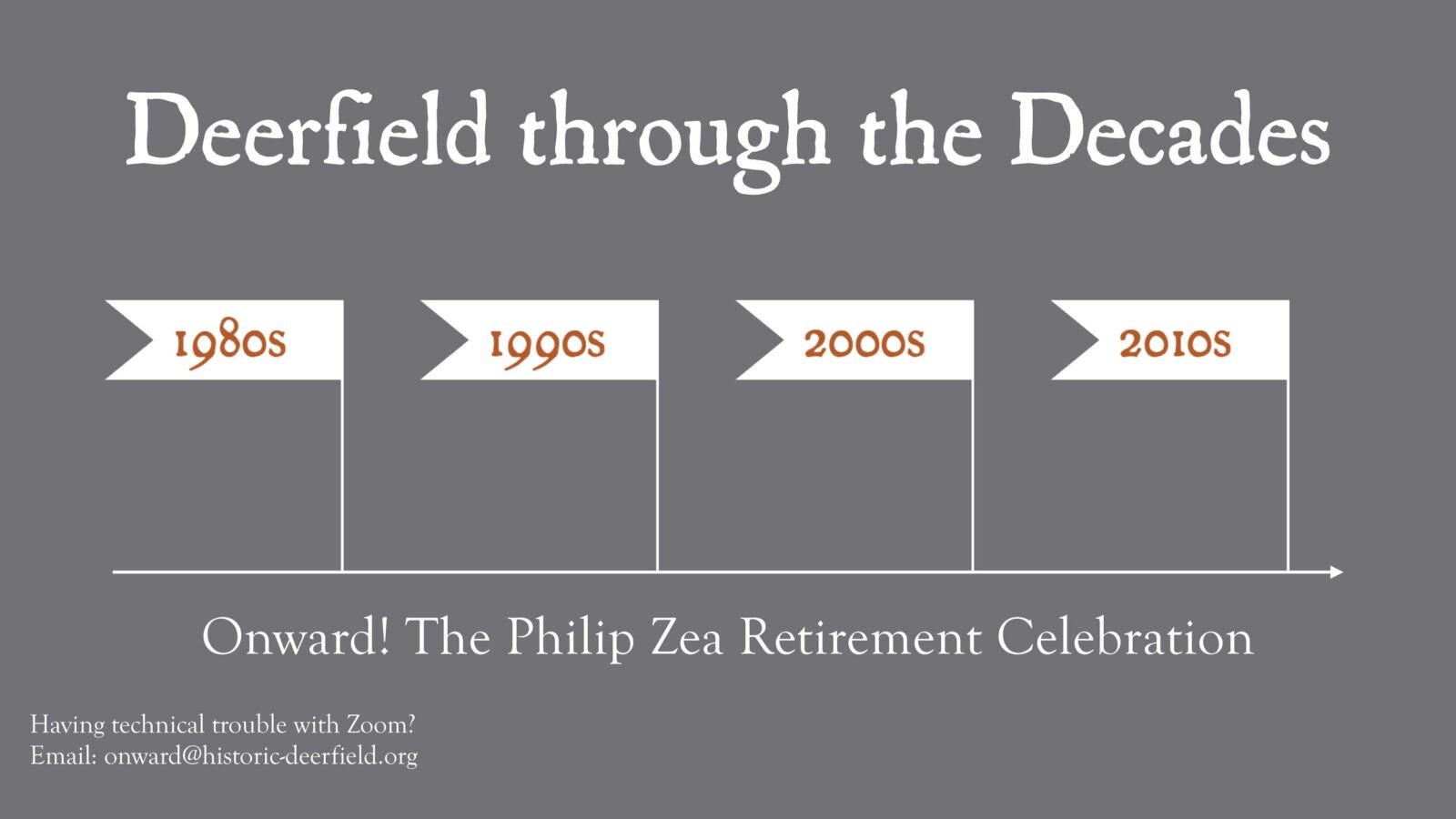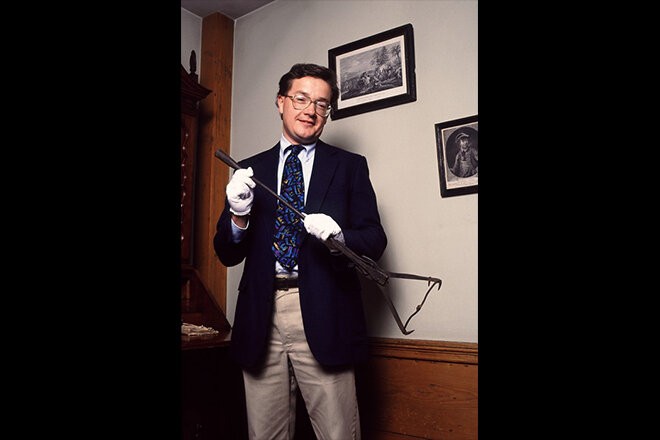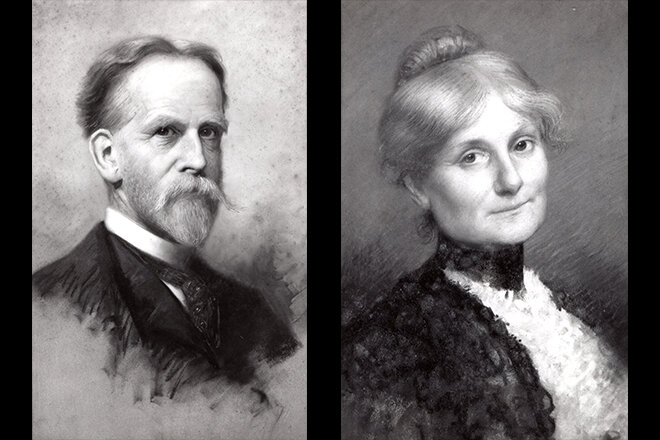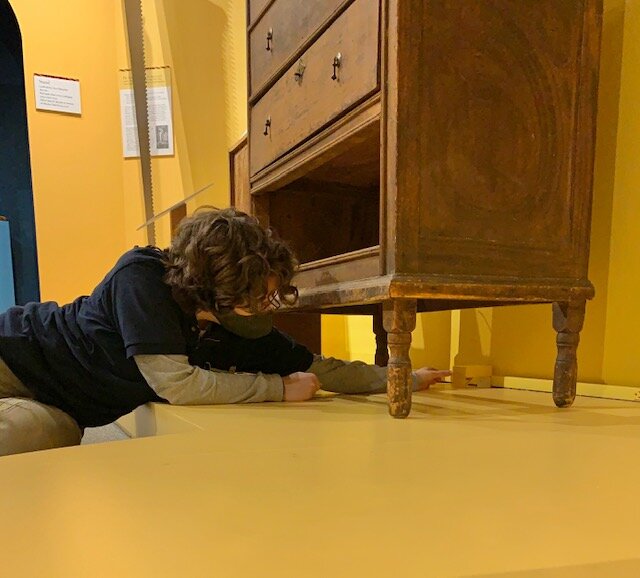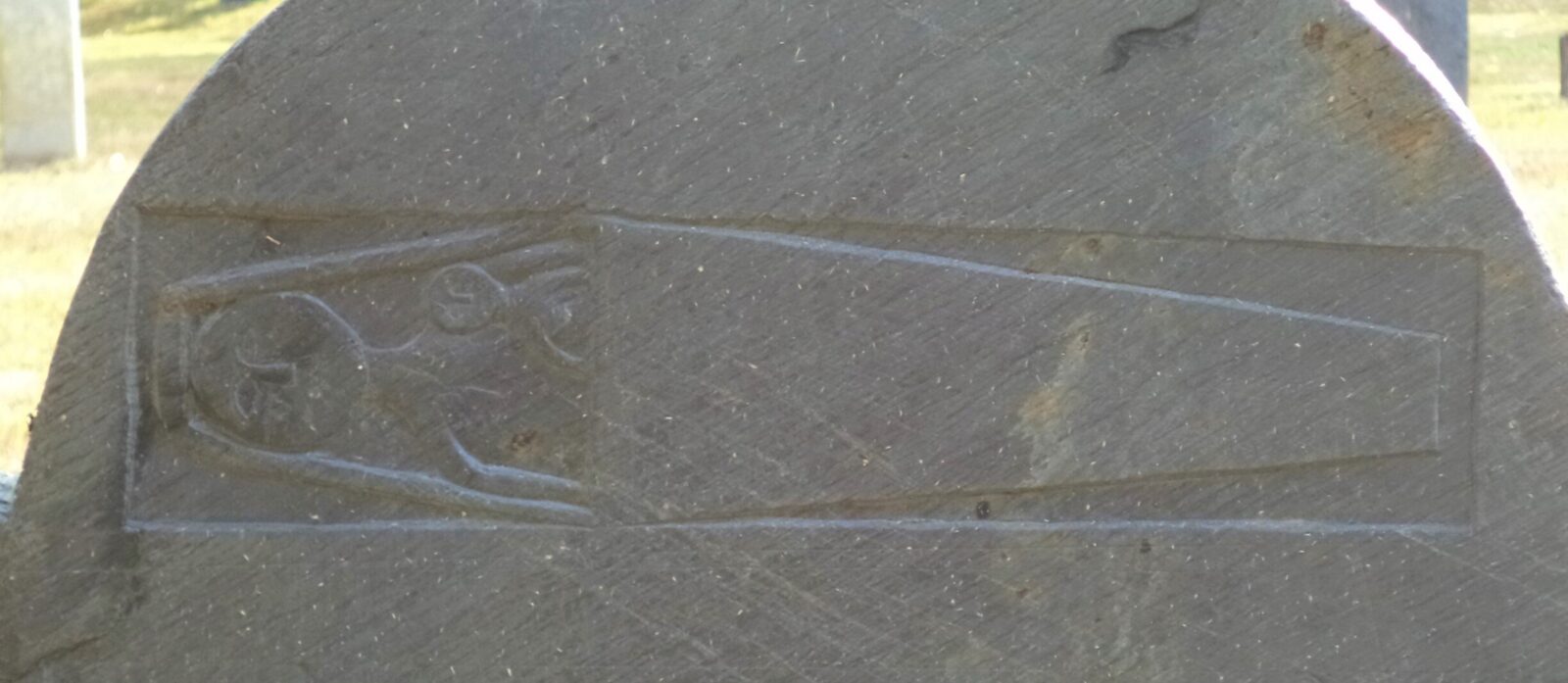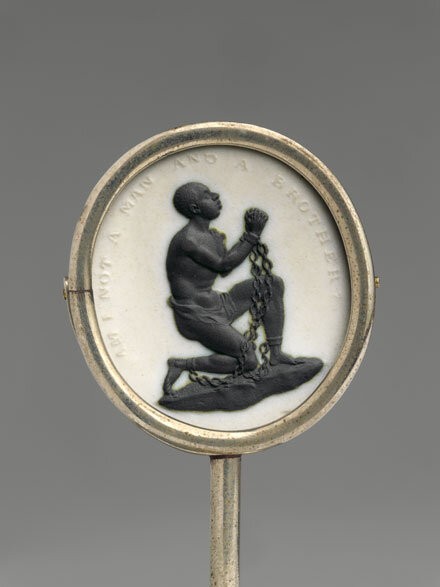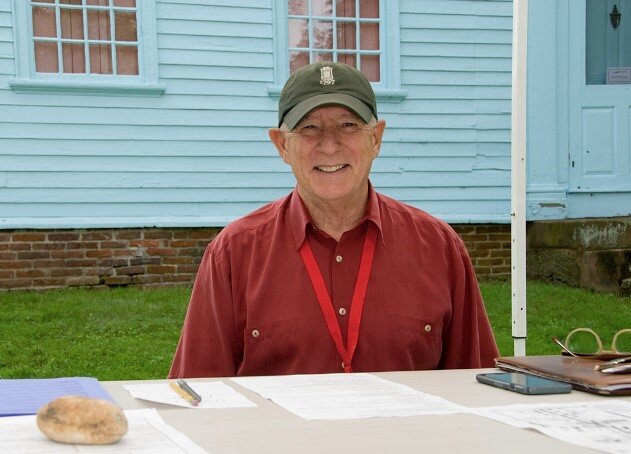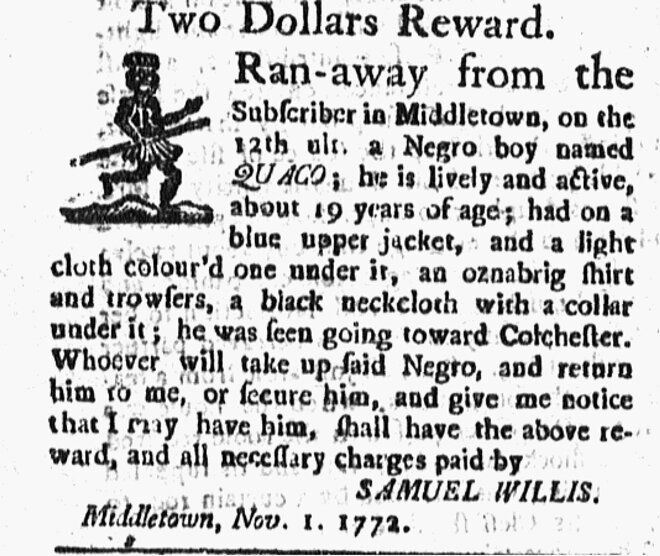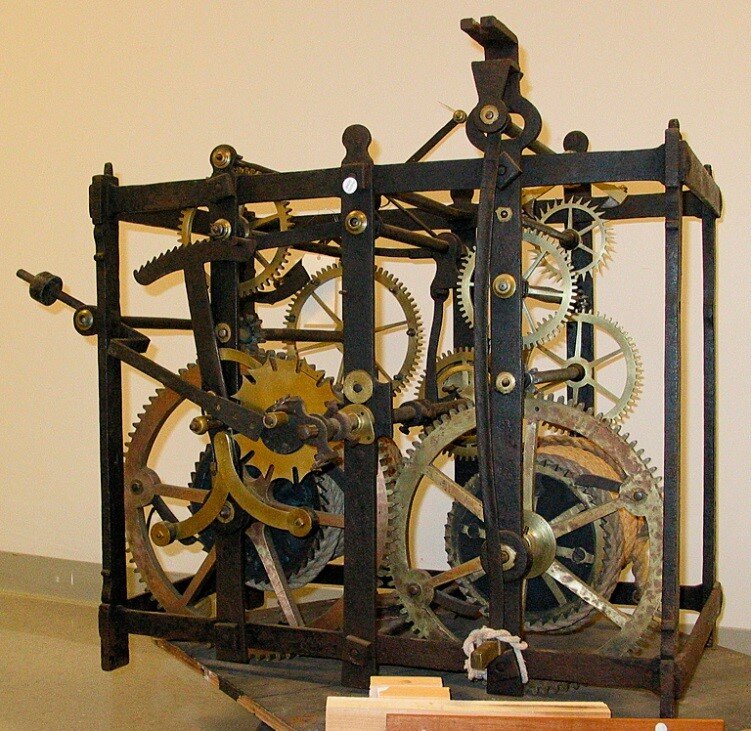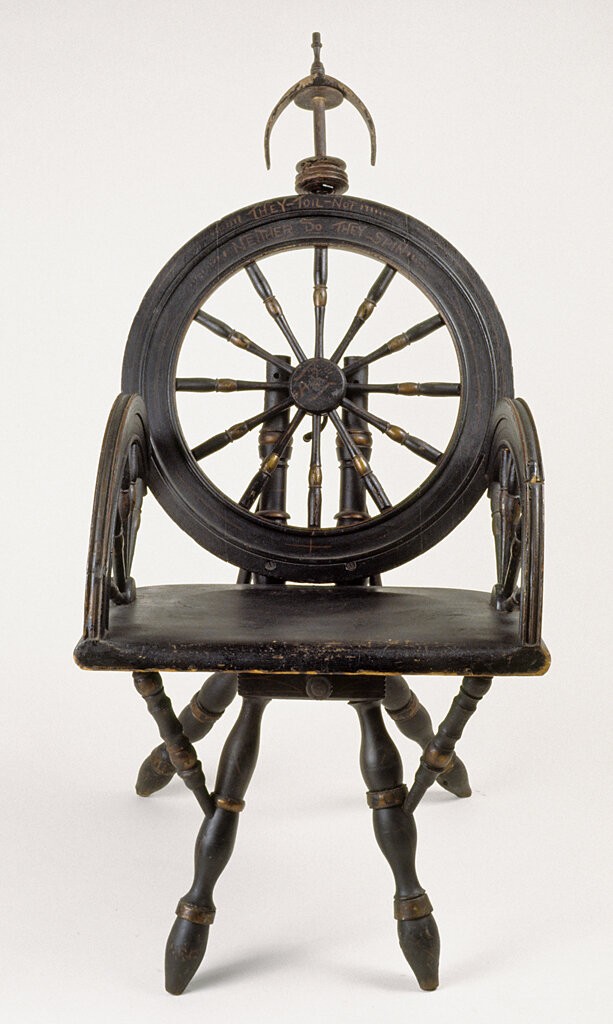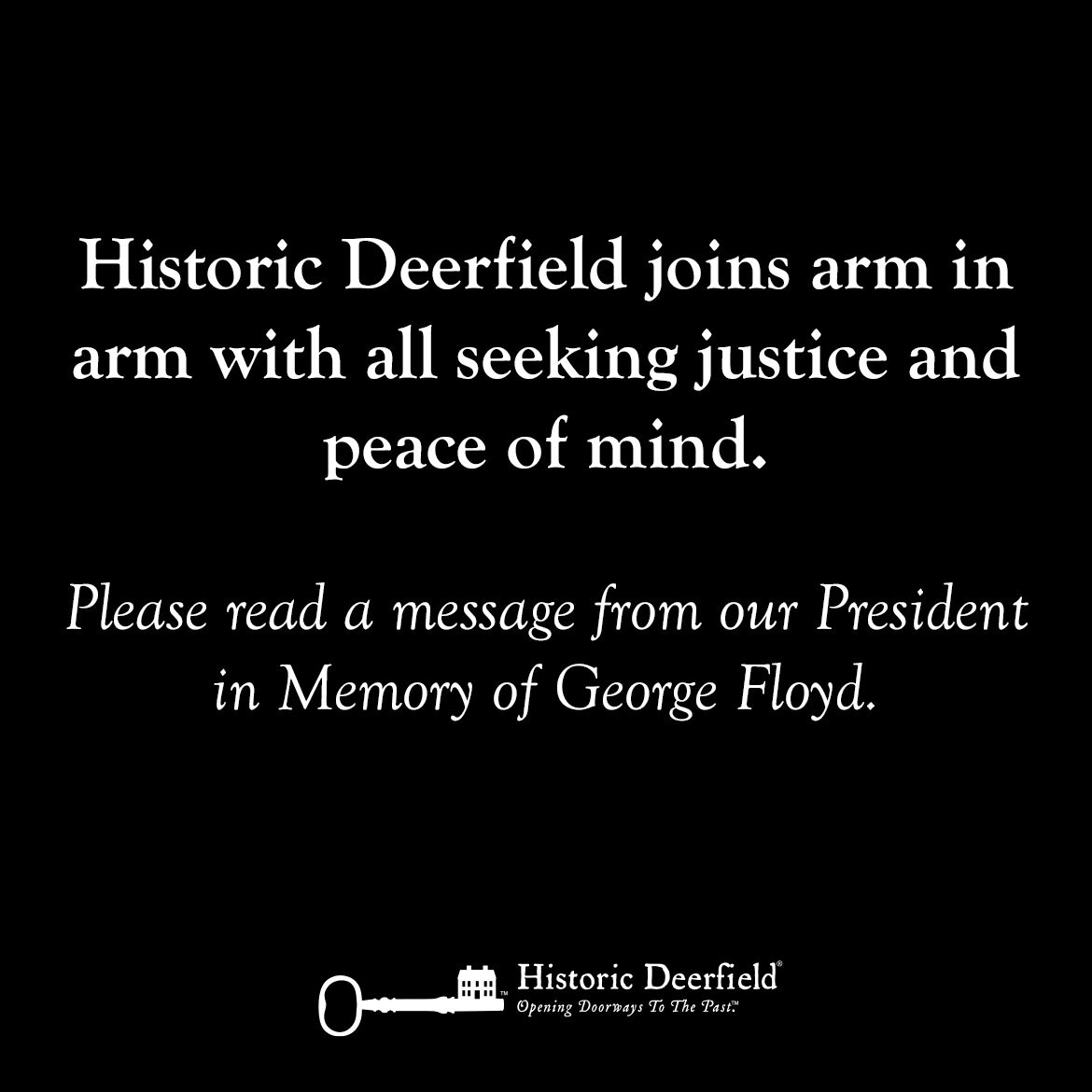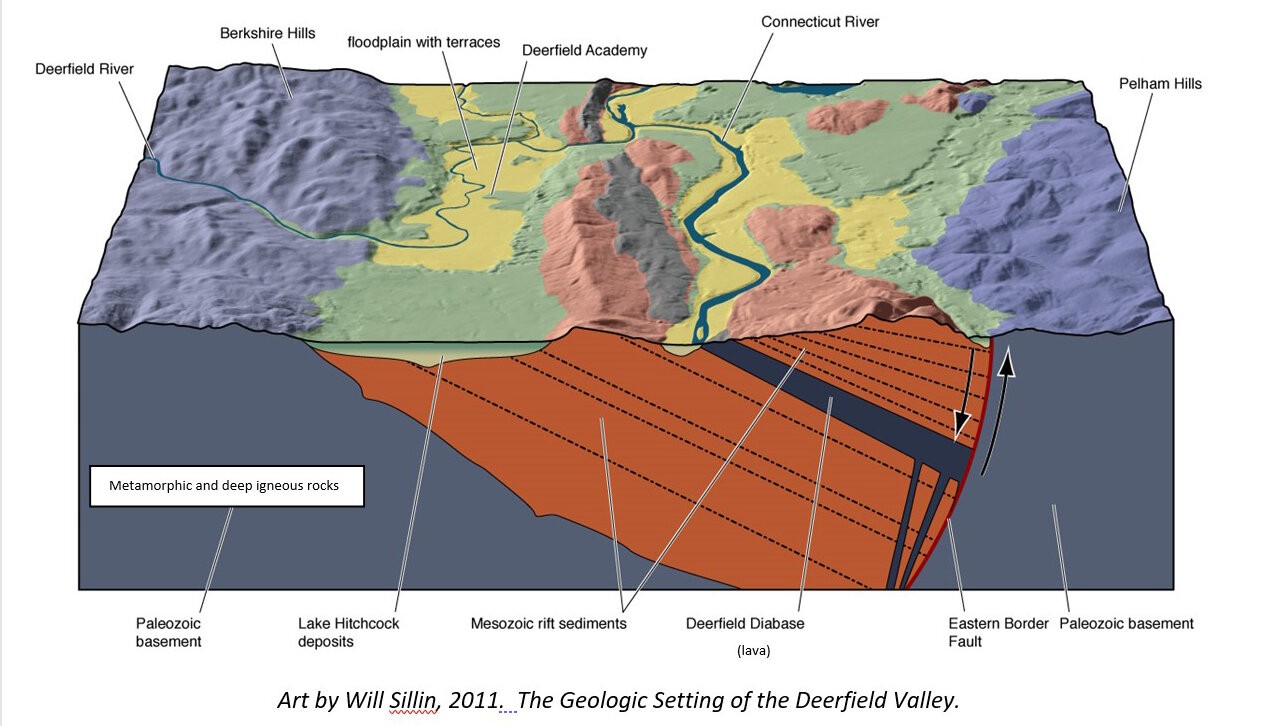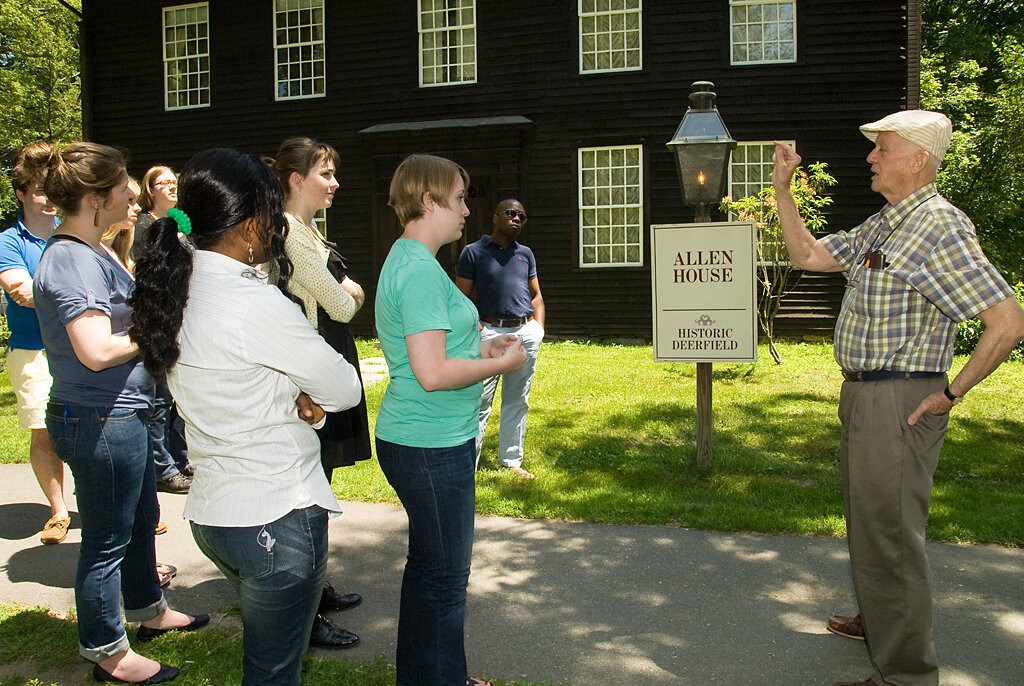Claire C. Carlson, Director of Archaeology, provides an update on the fieldwork completed to-date in the Stebbins House Archaeology Program.
The Village Broadside
The Blog of Historic Deerfield
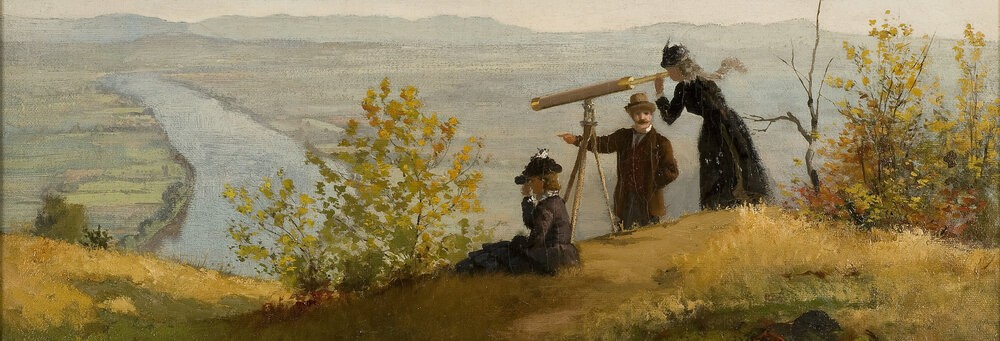
Fearnothing Seamen’s Jackets and Honey Comb Breeches: A 1760 Shipping Invoice for Ready-Made Clothing in the Memorial Libraries
Guest blog contributors Tyler Rudd Putman and Henry Cooke examine a 1760 shipping invoice for ready-made clothing to Boston merchant-tailor William Waine. The authors explore the clothing trade in mid-18th-century Boston.
A Unique Book of Maps
Most academies taught geography through an understanding of maps, perhaps influenced by Emma Willard’s teachings. Willard (1787-1870) declared maps “the written language of geography,” and persuasively argued for their use in the classroom.[3] This often took the form of students creating a graphic representation, whether with pen, ink, and watercolors, or needle and thread, or some combination of the two.
Take a Look: A Woman’s Early Nineteenth-Century Riding Hat, Part 1
In 2001, Historic Deerfield acquired a rare woman’s riding hat. Dating to about 1815, its accompanying riding suit, or habit, no longer survives. Nevertheless, it is an important object in the museum’s fashion and dress collection, helping to inform visitors today about conventions of female fashion and sport at the turn of the 19th century.
Deerfield Through the Decades: Onward! The Philip Zea Retirement Celebration
On Wednesday, May 19, 2021, Historic Deerfield celebrated the career of its President and CEO, Philip Zea, who is retiring after 36 years working at the museum.
My Favorite Object at Historic Deerfield
In April’s blog, Historic Deerfield President and CEO Philip Zea shares one of his favorite objects in the museum collection – and gives a primer on the nine points of connoisseurship in collecting that you can take with you in the quest for significant art and antiques.
The Champneys: Deerfield’s Artistic Power Couple
In 1876, the Centennial World’s Fair in Philadelphia equally commemorated our country’s past and envisioned its bright future. This fused energy swept into Deerfield with the arrival of artist James Wells (“Champ”) Champney and his writer wife Elizabeth Williams (“Lizzie”) Champney that summer.
Spiders in the Attic, Beetles in the Basement: Pest Management at Historic Deerfield
Historic Deerfield is proud to welcome visitors from all over the world, but when it comes to the insects that also call western Massachusetts home, we would prefer that they observe our historic houses from the outside. However, since spiders and other insects are wont to set up house wherever they like best, the museum has put in place a program to keep track of these tiny intruders. This system is known as an integrated pest management program, or IPM.
The Life and Death of Mary Arms Harvey
A look into the life and death of one Deerfield resident, Mary Arms Harvey, whose unique gravestone in Deerfield’s Old Burying Ground depicts a heartbreaking story.
Wedgwood’s Anti-Slavery Medallion
Despite its popularity in the 17th and 18th centuries as a sweetener in beverages such as tea, coffee, hot chocolate, and punch, sugar in New England (and globally, for that matter) has a very bitter history. As the popularity of sugar increased, the amount of enslaved labor required to harvest sugar also increased to meet the ever higher demand. However, beginning in the 18th century in places such as England, critics of slavery and the slave trade grew louder, and took to expressing their condemnation of slavery on a variety of media, including ceramics. Josiah Wedgwood (1730-1795) was one such critic, producing in 1787 a ceramic medallion that effectively advocated the abolitionist cause.
Celebrating our Ambassadors – An Interview with William Fennessey
Historic Deerfield is honoring our volunteers this year with a series of interviews we are calling “Celebrating our Ambassadors” that introduces a few of our volunteers to our friends and followers. Our Ambassadors give their time with a variety of special talents. In this blog interview, William (Bill, to us) Fennessey shares his thoughts and memories of his volunteer time.
Board Games
Bored with your daily routine? Are you in a Netflix binging rut? Turn off your devices and dust off your chess set, play a game of checkers or mancala, crack open a dictionary and look for new words for a scrabble match, or teach yourself how to play a favorite old tavern game like table-top nine pins, shut the box, nine men’s morris, or fox and geese.This Monday we’re encouraging you play board games and to create your own.
Picturing Slavery: Clothing, Appearance, and New England Advertisements for Run-Away Enslaved Men During the 18th Century
Enslavers regularly placed “Run Away” advertisements in 18th-century American newspapers when their human “property” attempted to escape a life of perpetual bondage. Such ads are a powerful tool for present-day researchers documenting resistance to slavery. They also offer glimpses of individual enslaved people as they appeared to white contemporaries. Despite their inherent bias, run-away ads are thus an important source that can help us to better understand the clothing and appearance of historically under-represented people living in 18th-century New England.
Exploring Engraved Powder Horns
This Monday we’re encouraging you to create your own paper powder horn. We will show you some examples from The William H. Guthman Collection of American Powder Horns at Historic Deerfield, offer a brief description of how a powder horn is made, and then guide you in making your own paper powder horn.
Timekeeping in Early Deerfield
Timekeeping is the measurement of elapsing time. Humans are drawn to timekeeping “up to the minute” because we are self-important with “no time to waste” and because we are driven to master our surroundings through the manipulation of machinery.
An Object I Love
Every object has multiple meanings. Usually these need to be discerned or discovered—there’s the obvious meaning of what an object is and how it was used as well as the layers of secret meanings with which people endow the objects in their lives.
Unusually, this chair makes that process blatant.
Chairs are for sitting; spinning wheels for spinning fibers. Not anymore. Now spinning wheels are for sitting—and for an ideological respite at that.
In Memory of George Floyd
HIstoric Deerfield joins arm in arm with all seeking justice and peace of mind. Please read a message from our President in Memory of George Floyd.
Historic Deerfield President and CEO Philip Zea to Retire in Spring 2021
Historic Deerfield, Inc., announced today that its President and Chief Executive Officer, Philip Zea, intends to step down and retire in the Spring of 2021. Zea has led Historic Deerfield since 2003. He also served Historic Deerfield for 18 years earlier in his career, from 1981 to 1999, concluding as Deputy Director and Chief Curator.
Deerfield River Valley Mysteries: How the Glacier Age and other geologic events shaped Historic Deerfield and Surroundings (Part 2)
Several miles downstream from Shelburne Falls, the Deerfield valley widens into the familiar Historic Deerfield landscape of terraces and floodplains. The Deerfield River is very strange in this area, it flows north, just opposite of what would be expected. As a tributary to the southerly flowing Connecticut River, the Deerfield should flow diagonally into it, not opposite of the master stream. What mysteries are here! Beside its unexpected flow direction, why is the valley so wide and how did all the various flat terrace levels come about?
